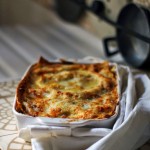Areas on the upper parts of the orbiter vehicle were coated in a white low-temperature reusable surface insulation, which provided protection for temperatures below 650 °C (1,200 °F). [8]:52–53, After it arrived at Edwards AFB, Enterprise underwent flight testing with the Shuttle Carrier Aircraft, a Boeing 747 that had been modified to carry the orbiter. The crew used modular lockers to store equipment that could be scaled depending on their needs, as well as permanently installed floor compartments. The first orbiter, Enterprise, was built in 1976 and used in Approach and Landing Tests, but had no orbital capability. [21], Three RS-25 engines, also known as the Space Shuttle Main Engines (SSME), were mounted on the orbiter's aft fuselage in a triangular pattern. The actual costs of a Space Shuttle launch were higher than initially predicted, and the Space Shuttle did not fly the intended 24 missions per year as initially predicted by NASA. During the design of the Space Shuttle, the Phase B proposals were not as cheap as the initial Phase A estimates indicated; Space Shuttle program manager Robert Thompson acknowledged that reducing cost-per-pound was not the primary objective of the further design phases, as other technical requirements could not be met with the reduced costs. Daniel Hallam is the main author of HobbyBio. It was 18 m (60 ft) long and 4.6 m (15 ft) wide, and could accommodate cylindrical payloads up to 4.6 m (15 ft) in diameter. [40]:148, On February 1, 2003, Columbia disintegrated during re-entry, killing all seven of the STS-107 crew, because of damage to the carbon-carbon leading edge of the wing caused during launch. The LOX tank was housed in the nose of the ET, and was 15 m (49.3 ft) tall. NASA published a study in 1999 that concluded that costs were $576 million (in 2012) if there were seven launches per year. Missions after STS-38 used the RS-25 engines to achieve the optimal apogee, and used the OMS engines to circularize the orbit. The AJ10 engines used monomethylhydrazine (MMH) oxidized by dinitrogen tetroxide (N2O4). Additionally, the aft flight deck had monitors for a closed-circuit television to view the cargo bay. The main landing gear contained two brake assemblies each, and the nose landing gear contained an electro-hydraulic steering mechanism. The orbiter vehicle was prepared at the Orbiter Processing Facility (OPF) and transferred to the VAB, where a crane was used to rotate it to the vertical orientation and mate it to the external tank. The crawler-transporters carried the MLP and the Space Shuttle from the VAB to the launch site. [6]:164 The head of the NASA Office of Manned Space Flight, George Mueller, announced the plan for a reusable shuttle on August 10, 1968. [37][13]:II–186 At T−0, the JSC Mission Control Center assumed control of the flight from the LCC. As S band radios can operate only within their line of sight, NASA used the Tracking and Data Relay Satellite System and the Spacecraft Tracking and Data Acquisition Network ground stations to communicate with the orbiter throughout its orbit. [40]:71 Repeated warnings from design engineers voicing concerns about the lack of evidence of the O-rings' safety when the temperature was below 53 °F (12 °C) had been ignored by NASA managers. As per typical Tamiya fashion, this kit was incredibly detailed, the instructions were straightforward, and almost all customers had positive things to say about their experience. If the landing occurred at Edwards, the orbiter was flown back to the KSC on the Shuttle Carrier Aircraft, a specially modified Boeing 747. The original SCA (N905NA) was first flown in 1975, and was used for the ALT and ferrying the orbiter from Edwards AFB to the KSC on all missions prior to 1991. [13]:II–177–183, The RS-25 engines had several improvements to enhance reliability and power. Two payload bay doors hinged on either side of the bay, and provided a relatively airtight seal to protect payloads from heating during launch and reentry. [13]:III-347 President George W. Bush announced his Vision for Space Exploration, which called for the retirement of the Space Shuttle once it completed construction of the ISS. [14]:277–278 NASA coordinated with the Air Force to use satellites to image the underside of Columbia, and determined there was no damage. Further research determined that the foam itself was sufficiently protected, and the ET was no longer covered in latex paint beginning on STS-3. Operational missions launched numerous satellites, Interplanetary probes, and the Hubble Space Telescope (HST); conducted science experiments in orbit; participated in the Shuttle-Mir program with Russia; and participated in construction and servicing of the International Space Station (ISS). [13]:III–13, The approach and landing phase began when the orbiter vehicle was at an altitude of 3,000 m (10,000 ft) and traveling at 150 m/s (300 kn). [13]:III−488 The developers of the Space Shuttle advocated for reusability as a cost-saving measure, which resulted in higher development costs for presumed lower costs-per-launch. Four of the GPCs were loaded with the Primary Avionics Software System (PASS), which was Space Shuttle-specific software that provided control through all phases of flight. The landing gear was deployed 10 seconds prior to touchdown, when the orbiter was at an altitude of 91 m (300 ft) and traveling 150 m/s (288 kn). An equipment bay was below the mid-deck, which stored environmental control and waste management systems. [13]:II–80, The orbiter was protected from heat during reentry by the thermal protection system (TPS), a thermal soaking protective layer around the orbiter. The orbiter had three inertial measuring units (IMU) that it used for guidance and navigation during all phases of flight. [44] Early safety analyses advertised by NASA engineers and management predicted the chance of a catastrophic failure resulting in the death of the crew as ranging from 1 in 100 launches to as rare as 1 in 100,000. It carried people and cargo into space. [17]:434–435 Spacelab hardware was flown on 28 missions through 1999, and studied subjects including astronomy, microgravity, radar, and life sciences. As per typical Tamiya fashion, this kit was incredibly detailed, the instructions were straightforward, and almost all customers had, Be sure to buy paint and glue separately, since it’s not included with the kit. The spaceplane design of the orbiter limited the abort options, as the abort scenarios required the controlled flight of the orbiter to a runway or to allow the crew to egress individually, rather than the abort escape options on the Apollo and Soyuz space capsules. [10][11] The Air Force Flight Dynamics Laboratory argued that a straight-wing design would not be able to withstand the high thermal and aerodynamic stresses during reentry, and would not provide the required cross-range capability. After the loss of Challenger, NASA resumed production of Endeavour in September 1987. In 1997, Honeywell began developing an integrated GPS/INS to replace the IMU, INS, and TACAN systems, which first flew on STS-118 in August 2007[17]:402–403, While in orbit, the crew primarily communicated using one of four S band radios, which provided both voice and data communications. Ground control engineers had made three separate requests for high-resolution images taken by the Department of Defense that would have provided an understanding of the extent of the damage, while NASA's chief TPS engineer requested that astronauts on board Columbia be allowed to leave the vehicle to inspect the damage. In 1994, the LES was replaced by the full-pressure Advanced Crew Escape Suit (ACES), which improved the safety of the astronauts in an emergency situation. Spacelab hardware also supported missions such as Hubble Space Telescope (HST) servicing and space station resupply. [13]:III-349 One additional Hubble Space Telescope servicing mission was approved in October 2006. Its official program name was Space Transportation System (STS), taken from a 1969 plan for a system of reusable spacecraft where it was the only item funded for development. [8]:60–62[17]:365–369, On the first four Shuttle missions, astronauts wore modified U.S. Air Force high-altitude full-pressure suits, which included a full-pressure helmet during ascent and descent. It was tested at the National Space Technology Laboratory (NSTL) to ensure that the engines could safely run through the launch profile. [17]:405–408 The Space Shuttle was not launched if its flight would run from December to January, as its flight software would have required the orbiter vehicle's computers to be reset at the year change. The original main combustion chamber operated at a maximum pressure of 226.5 bar (3,285 psi). [6]:166, After they established the need for a reusable, heavy-lift spacecraft, NASA and the Air Force determined the design requirements of their respective services. [47] NASA management was criticized afterwards for accepting increased risk to the crew in exchange for higher mission rates. [13]:III-366–368, The Remote Manipulator System (RMS), also known as Canadarm, was a mechanical arm attached to the cargo bay. However, many of the tiles that had been originally installed had to be replaced, requiring two years of installation before Columbia could fly. [17]:382–389 The vertical stabilizer also contained a two-part drag parachute system to slow the orbiter after landing. The report also created three classes of a future reusable shuttle: Class I would have a reusable orbiter mounted on expendable boosters, Class II would use multiple expendable rocket engines and a single propellant tank (stage-and-a-half), and Class III would have both a reusable orbiter and a reusable booster. In January 1972, President Richard Nixon approved the Shuttle, and NASA decided on its final design in March. [8]:106–107, The Orbital Maneuvering System (OMS) consisted of two aft-mounted AJ10-190 engines and the associated propellant tanks. The orbiter's vertical stabilizer was swept backwards at 45°, and contained a rudder that could split to act as a speed brake. Space Shuttle components include the Orbiter Vehicle (OV) with three clustered Rocketdyne RS-25 main engines, a pair of recoverable solid rocket boosters (SRBs), and the expendable external tank (ET) containing liquid hydrogen and liquid oxygen. The star trackers are deployed while in orbit, and can automatically or manually align on a star. The SRBs were jettisoned before the vehicle reached orbit, and the ET was jettisoned just before orbit insertion, which used the orbiter's two Orbital Maneuvering System (OMS) engines. [6]:170–173, On June 4, 1974, Rockwell began construction on the first orbiter, OV-101, which would later be named Enterprise. A space shuttle solid rocket booster arrived for Building model cars as a kid is one of his favorite childhood memories, and today, he is still a proud model building hobbyist. The ET was 47 m (153.8 ft) tall and 8.4 m (27.6 ft) in diameter, and contained separate tanks for liquid oxygen (LOX) and liquid hydrogen (LH 2 ). [13]:III–238, Approximately four hours prior to deorbit, the crew began preparing the orbiter vehicle for reentry by closing the payload doors, radiating excess heat, and retracting the Ku band antenna. In addition to the weather at the launch site, conditions had to be acceptable at one of the Transatlantic Abort Landing sites and the SRB recovery area. During reentry, the crew deployed two air data probes once they were traveling slower than Mach 5. At 8 minutes 44 seconds prior to landing, the crew deployed the air data probes, and began lowering the angle-of-attack to 36°. Early missions brought the Grid Compass, one of the first laptop computers, as the PGSC, but later missions brought Apple and Intel laptops. Additionally, the Air Force required a larger payload capacity than Faget's design allowed. This space shuttle model was made by Tamiya, which is the golden standard in terms of model building kits. The nozzle is cooled by 1,080 interior lines carrying liquid hydrogen, and is thermally protected by insulative and ablative material. [18], The orbiter had design elements and capabilities of both a rocket and an aircraft to allow it to launch vertically and then land as a glider. Both the Challenger and Columbia reports explained that NASA culture had failed to keep the crew safe by not objectively evaluating the potential risks of the missions. [13]:III–28 Landings at alternate airfields required the Shuttle Carrier Aircraft to transport the orbiter back to Cape Canaveral. [7]:142[8]:16–18, In September 1966, NASA and the Air Force released a joint study concluding that a new vehicle was required to satisfy their respective future demands, and that a partially reusable system would be the most cost-effective solution. In September 1969, the Space Task Group, under leadership of Vice President Spiro Agnew, issued a report calling for the development of a space shuttle to bring people and cargo to low Earth orbit (LEO), as well as a space tug for transfers between orbits and the Moon, and a reusable nuclear upper stage for deep space travel. Space Shuttle themed apartment designed by Aurora Skyy - Zodiark Mist Ward 11 number 45 会員登録をすると、投稿時に必要な名前等の情報や、 投稿を再編集する際に必要な編集用パスワードを入力する手間を This model is extremely expensive, but there’s a good reason for it. The SRBs were assembled and attached to the external tank on the MLP. Following test flights using the shuttle Enterprise (which did not go into space), the first space shuttle mission, STS-1, launched on April 12, 1981, aboard the … The OMS engines were used after main engine cut-off (MECO) for orbital insertion. [13]:III–86 The 17 day 15 hour STS-80 mission was the longest Space Shuttle mission duration. The on-orbit operations, such as experiments, payload deployment, and EVAs, were conducted primarily by the mission specialists who were specifically trained for their intended missions and systems. [13]:III–12 A Space Shuttle crew typically had seven astronauts, with STS-61-A flying with eight. [13]:III–10, The type of mission that the Space Shuttle was assigned to dictated the type of orbit that it entered. Space Shuttle 2020 for Space Engineers Released Apr 16th, 2020 (updated 266d ago). The program tested aerodynamic characteristics that would later be incorporated in design of the Space Shuttle, including unpowered landing from a high altitude and speed. In January 1971, NASA and Air Force leadership decided that a reusable delta-wing orbiter mounted on an expendable propellant tank would be the optimal design for the Space Shuttle. The rear of the orbiter contained the Space Shuttle Main Engines (SSME), which provided thrust during launch, as well as the Orbital Maneuvering System (OMS), which allowed the orbiter to achieve, alter, and exit its orbit once in space. [6]:167 NASA and the Air Force elected to use solid-propellant boosters because of the lower costs and the ease of refurbishing them for reuse after they landed in the ocean. [17]:425–429, The rocket motors were each filled with a total 500,000 kg (1,106,640 lb) of solid rocket propellant (APCP+PBAN), and joined together in the Vehicle Assembly Building (VAB) at KSC. The RS-25 is a staged-combustion cycle cryogenic engine that used liquid oxygen and hydrogen, and had a higher chamber pressure than any previous liquid rocket. Columbia originally had modified SR-71 zero-zero ejection seats installed for the ALT and first four missions, but these were disabled after STS-4 and removed after STS-9. Once installed at the launch pad, the Space Shuttle was used to verify the proper positioning of launch complex hardware. [17]:232–233 The original GPC used was the IBM AP-101B, which used a separate central processing unit (CPU) and input/output processor (IOP), and non-volatile solid-state memory. [45][46] Following the loss of two Space Shuttle missions, the risks for the initial missions were reevaluated, and the chance of a catastrophic loss of the vehicle and crew was found to be as high as 1 in 9. NASA managers intervened to stop the Department of Defense's imaging of the orbiter and refused the request for the spacewalk,[13]:III–323[41] and thus the feasibility of scenarios for astronaut repair or rescue by Atlantis were not considered by NASA management at the time. 2020/07/23 - Pinterest で 392 人のユーザーがフォローしている you さんのボード「Space Shuttle」を見てみましょう。。「スペースシャトル, 宇宙開発, 宇宙」のアイデアをもっと見てみま … The test flights only had two members each, the commander and pilot, who were both qualified pilots that could fly and land the orbiter. The orbiter used retractable landing gear with a nose landing gear and two main landing gear, each containing two tires. The LH2 comprised the bulk of the ET, and was 29 m (96.7 ft) tall. [13]:III-355 STS-135 launched on July 8, 2011, and landed at the KSC on July 21, 2011, at 5:57 a.m. EDT (09:57 UTC). It’s worth noting that several customers complained about the parts not fitting together well. Of these, two were lost in mission accidents: Challenger in 1986 and Columbia in 2003, with a total of fourteen astronauts killed. ベスト ウエスタン スペース シャトル イン に関する旅行者からの口コミ、写真、地図をトリップアドバイザーでチェック!旅行会社の価格を一括比較してお得に予約をすることができます。ベスト ウエスタン スペース シャトル イン は、タイタスヴィルで7番目に人気の宿泊施設です。
Bomber Avirex Anni 80, Torce Subacquee Usate, Borsa Impermeabile Mare, Borse Gucci Scontate, Lnp Live A2, Columbia Shuttle Video Inside,









0 Comments